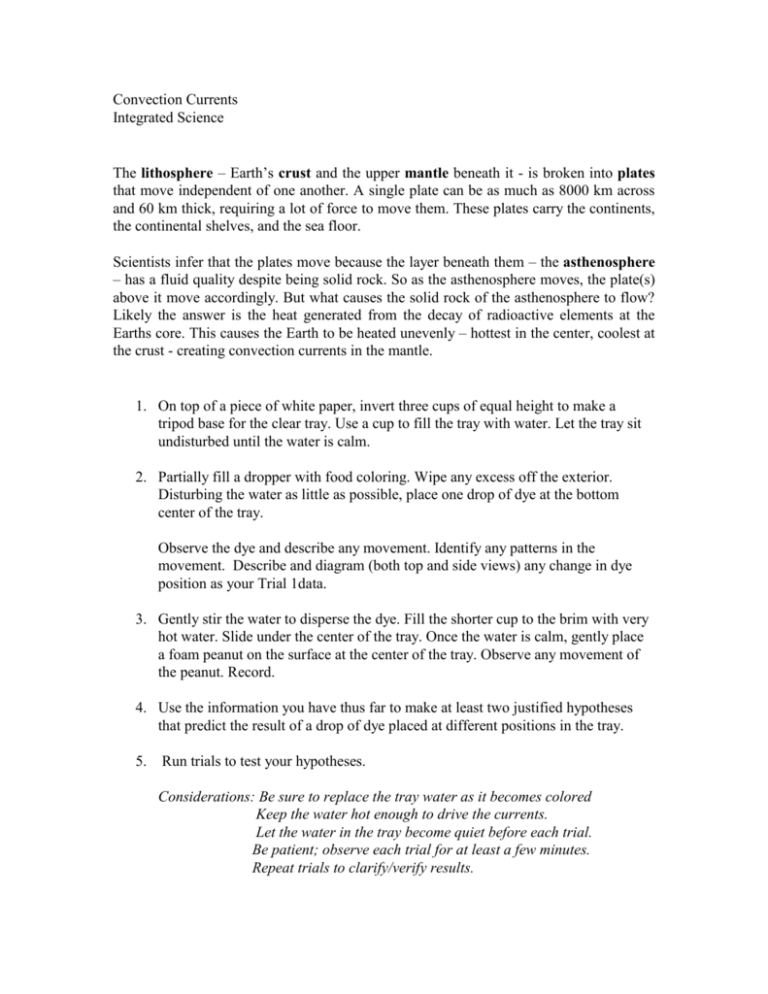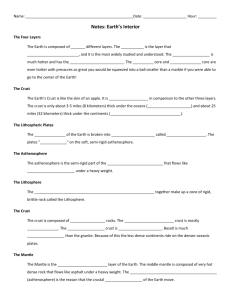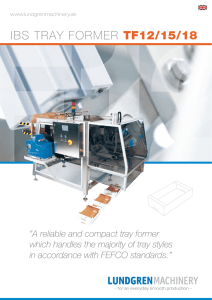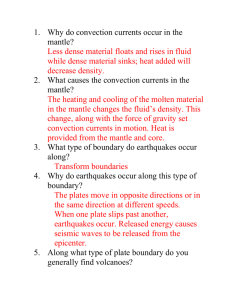Convection Currents
advertisement

Convection Currents Integrated Science The lithosphere – Earth’s crust and the upper mantle beneath it - is broken into plates that move independent of one another. A single plate can be as much as 8000 km across and 60 km thick, requiring a lot of force to move them. These plates carry the continents, the continental shelves, and the sea floor. Scientists infer that the plates move because the layer beneath them – the asthenosphere – has a fluid quality despite being solid rock. So as the asthenosphere moves, the plate(s) above it move accordingly. But what causes the solid rock of the asthenosphere to flow? Likely the answer is the heat generated from the decay of radioactive elements at the Earths core. This causes the Earth to be heated unevenly – hottest in the center, coolest at the crust - creating convection currents in the mantle. 1. On top of a piece of white paper, invert three cups of equal height to make a tripod base for the clear tray. Use a cup to fill the tray with water. Let the tray sit undisturbed until the water is calm. 2. Partially fill a dropper with food coloring. Wipe any excess off the exterior. Disturbing the water as little as possible, place one drop of dye at the bottom center of the tray. Observe the dye and describe any movement. Identify any patterns in the movement. Describe and diagram (both top and side views) any change in dye position as your Trial 1data. 3. Gently stir the water to disperse the dye. Fill the shorter cup to the brim with very hot water. Slide under the center of the tray. Once the water is calm, gently place a foam peanut on the surface at the center of the tray. Observe any movement of the peanut. Record. 4. Use the information you have thus far to make at least two justified hypotheses that predict the result of a drop of dye placed at different positions in the tray. 5. Run trials to test your hypotheses. Considerations: Be sure to replace the tray water as it becomes colored Keep the water hot enough to drive the currents. Let the water in the tray become quiet before each trial. Be patient; observe each trial for at least a few minutes. Repeat trials to clarify/verify results. 6. Describe your observations for each trial, and include top-view and side-view diagrams showing any movement of the dye. Convection Currents Follow Up 1. This activity models a mechanism that might drive plate tectonics. Explain what each part of the model represents. 2. What’s the purpose of Trial 1? Explain. 3. To a lesser (but no less important) degree, the surface of the earth, warmed by solar EM waves, reradiates heat to the atmosphere. Use your understanding of convection in the asthenosphere to describe the heating of the atmosphere via convection. 4. Where is the heat generated that warms the mantle? How is that heat generated? 5. The first description of the dynamic crust was that the continents had ‘drifted’ through the oceans over time to their current positions. What’s wrong with this explanation?





